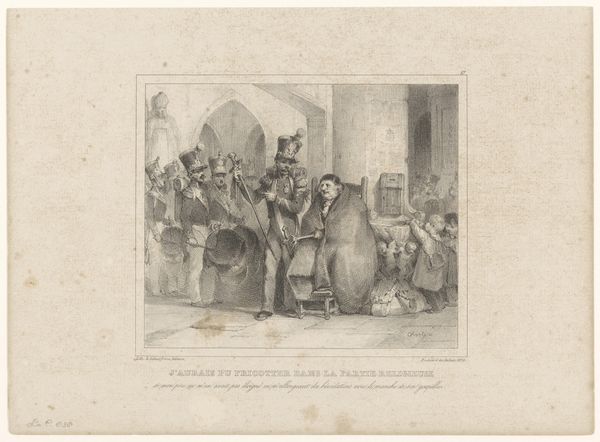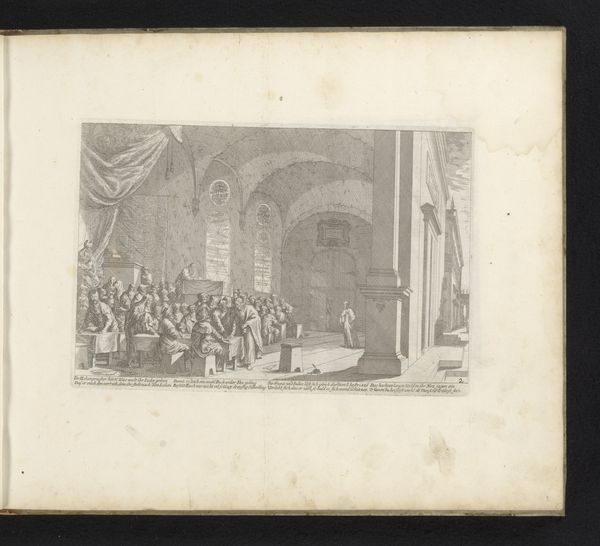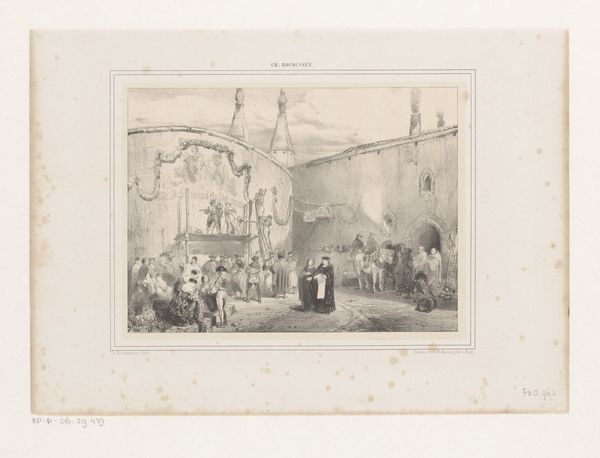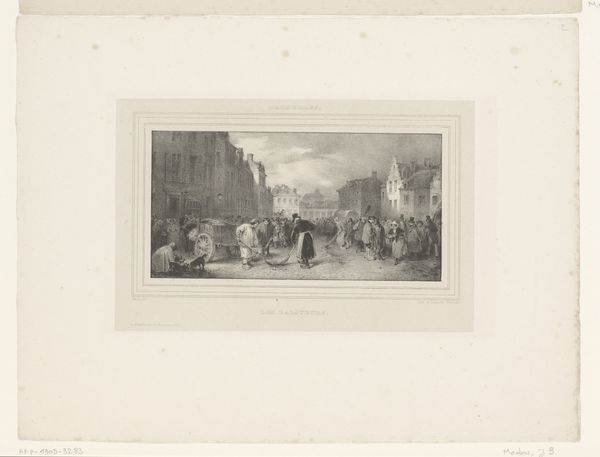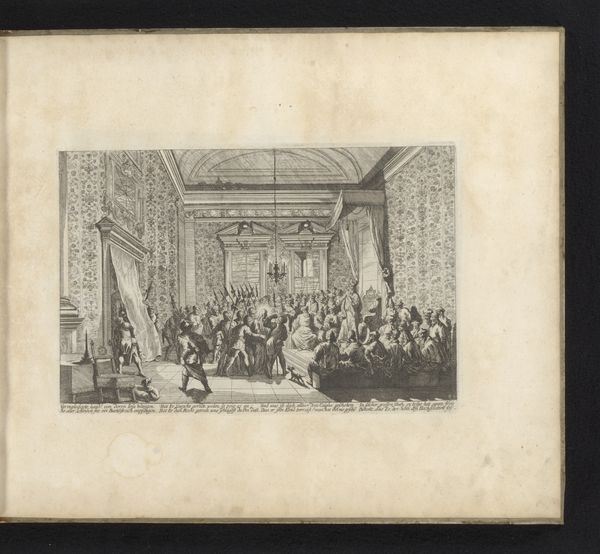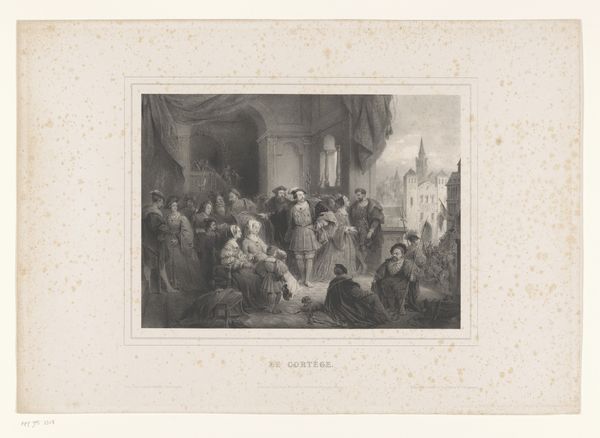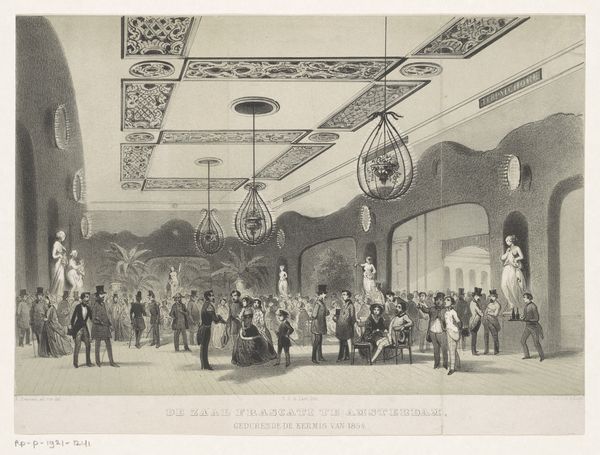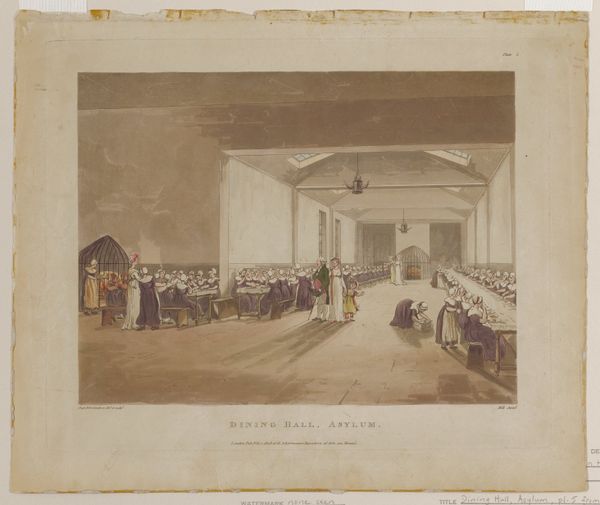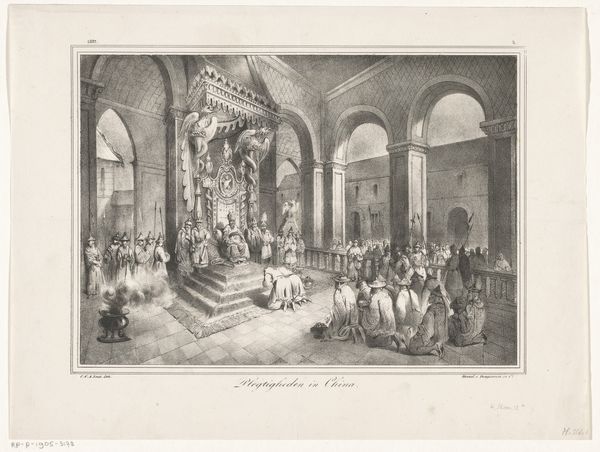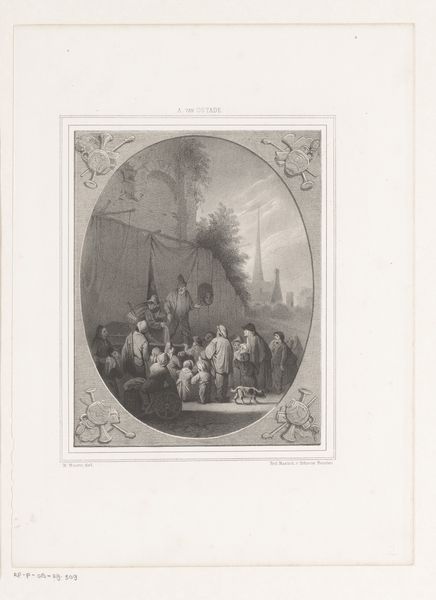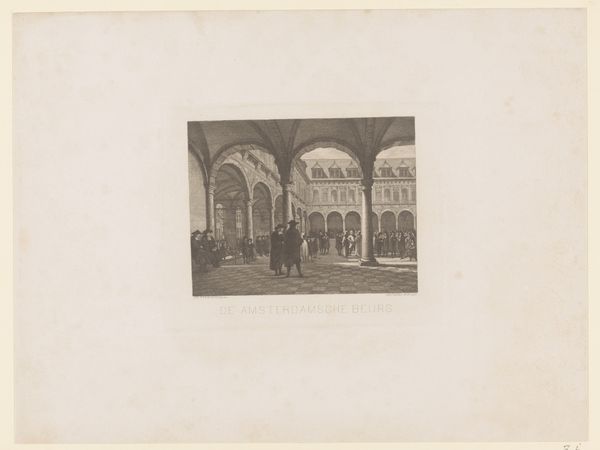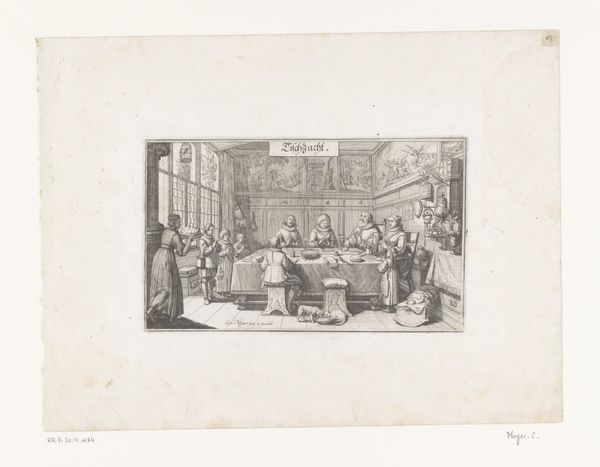
drawing, print, paper
#
drawing
#
neoclacissism
#
dutch-golden-age
# print
#
landscape
#
paper
#
genre-painting
#
academic-art
#
realism
Dimensions: height 309 mm, width 355 mm
Copyright: Rijks Museum: Open Domain
Editor: This is "Kunstbeschouwing in Arti et Amicitiae in Amsterdam," a print made by Johannes de Mare in 1851. The detailed linework capturing a room filled with people observing art is quite captivating. What compositional elements stand out to you? Curator: Initially, it is the deployment of space itself that commands attention. Note how the composition utilises linear perspective, guiding the eye through the crowded foreground toward the receding architectural details at the back. Do you see how this strategy organises and contains the chaos? Editor: Yes, the converging lines draw you into the image, past all the people. And is that repetitive pattern created by the arches? Curator: Precisely. Observe how this structural device frames the multitude of figures within the Arti et Amicitiae. This creates a rhythm and a sense of depth. Furthermore, we should consider the contrast in tonal values; observe how the artist manipulates light and shadow to delineate forms and enhance spatial relationships. Editor: I hadn't considered that – how the lighting not only illuminates the scene but contributes to the overall organization of forms. It's much more calculated than I first perceived. Curator: Indeed. Consider, too, the geometric structures imposed upon the depicted forms – the rectangular table, the cylindrical columns, the spherical chandeliers. Are they not, in their starkness, playing a significant role in understanding the artist's purpose? Editor: It seems like de Mare used the architectural space to create a structured, almost academic feel to the gathering. It reframes what at first appears to be a spontaneous moment. I appreciate your perspective on the use of geometric and spatial arrangements to inform our understanding of the subject. Curator: It is in understanding these pictorial devices that we begin to unpack meaning beyond representation. Thank you.
Comments
No comments
Be the first to comment and join the conversation on the ultimate creative platform.

